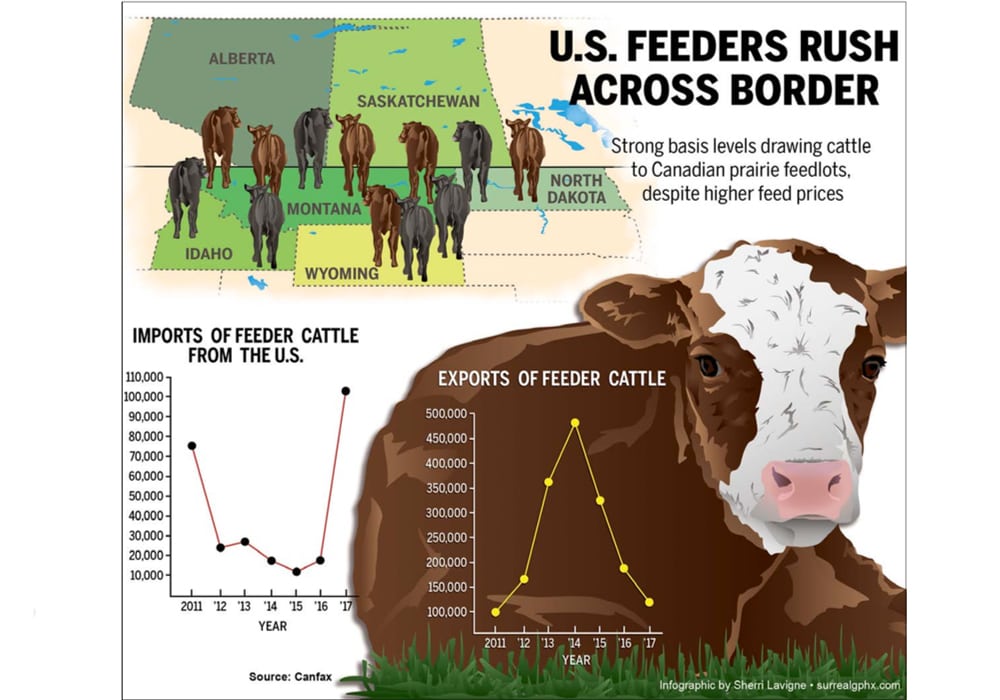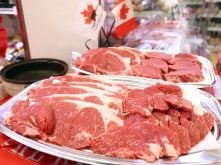Thousands of feeder calves from the United States are flowing into Canada.
Strong basis levels and feed costs are the main drivers determining which direction cattle flow, said Brian Perillat, senior market analyst at Canfax.
“Traditionally, cattle moved to where the cheaper feed was, and right now the U.S. has cheaper feed, but we have had very strong basis levels,” Perillat said.
“Our fed cattle for the most part have been higher than Nebraska, and that helps keep more of these feeders here and leads to more imports based on our stronger fed market despite having higher feed costs.”
Read Also

More factors affecting winter weather
When you combine a weak La Niña, early Siberian snow, and a warm northern Pacific, it’s easy to see why long-range winter forecasting is so complex.
The U.S. Department of Agriculture’s Economic Research Service reported July 18 that 170,000 head could arrive in Canada by the end of this year because of favourable prices. Cattle imports as of May totaled 169,763 head, an increase of 11,033 head year over year. About 15,000 head were sent to Canada in May, almost double 2017 levels.
“This whole trade story is so interesting, barring all the hype about NAFTA,” Perillat said.
“Our exports and our imports are up, which is kind of odd in a lot of ways.”
However, he does not entirely agree with the USDA forecast.
“Our calves are not at a premium to the U.S. like they were last year,” he said.
“With the way our feed costs are and the price of barley and the fact that we could be looking at importing corn, I have a hard time to see how imports increase and have our feeder cattle go up as well.”
The 2017 Canfax annual report said about 106,000 head of U.S. feeders arrived Canada, making this country a marginal net exporter of feeders.
Imports of feeders in 2015 and 2016 were 10,570 and 17,880, respectively.
More than 70,000 American calves arrived in Canada in 2011, when Alberta had a large feed cost advantage compared to the U.S., Perillat said.
Even with sabre rattling over trade, this two way activity is a good thing, said Bryan Walton, manager of the Alberta Cattle Feeders Association.
“This is a reason to keep this border flowing both ways. Those calves in Montana are closer to the big feedlots in Alberta than they are to the big feedlots in the United States,” he said.
“It has been helped along by a positive basis and maybe some optimism.”
Canada and the U.S. continue to streamline movement of cattle. Originally there were disputes over testing for diseases such as bluetongue and anaplasmosis, and over time these issues have been resolved. Walton expects a full resolution later this year.
“I think we have some common sense options now and we are continuing to work on that,” he said.
The restricted feeder cattle program allows animals to be imported into Canada without testing requirements on a year-round basis. They require strict identification and certification for placement in feeding operations.
The U.S. has always accepted thousands of Canadian live cows, bulls, steers and heifers, but exports have been trending downward. Expanding U.S. cattle numbers were part of the reason for reduced export demand, said the 2017 Canfax annual report.
“We are still at historically low feeder calf exports,” said Perillat.
In 2014, Canada exported 1.2 million head of cattle, the highest since 2000. Of that group, 490,000 were feeders.
The following year, 336,000 feeders went south. In 2016 there were 198,330 Canadian feeders exported and last year exports dropped to 131,269.
The latest export numbers for the end of June showed 327,390 cattle were sold, and of that about 131,000 were feeders, a 70 percent increase over last year.
















